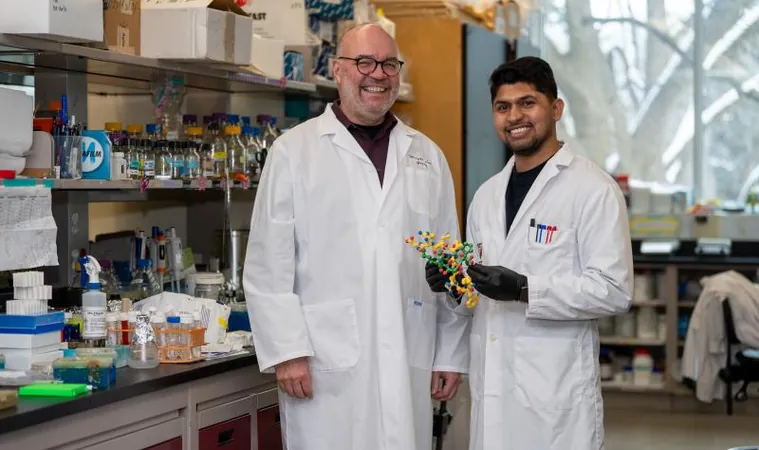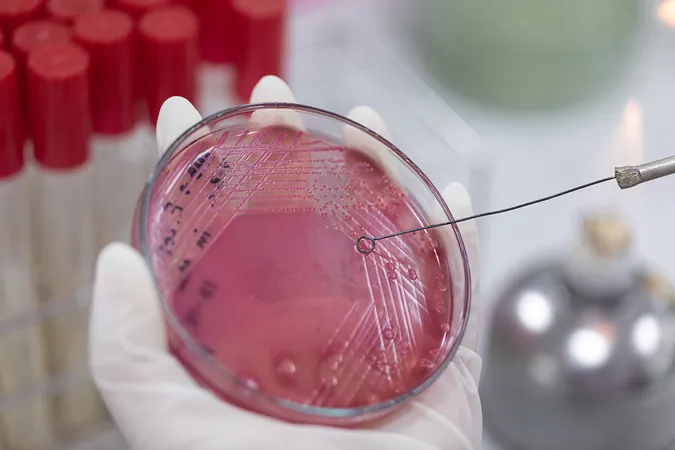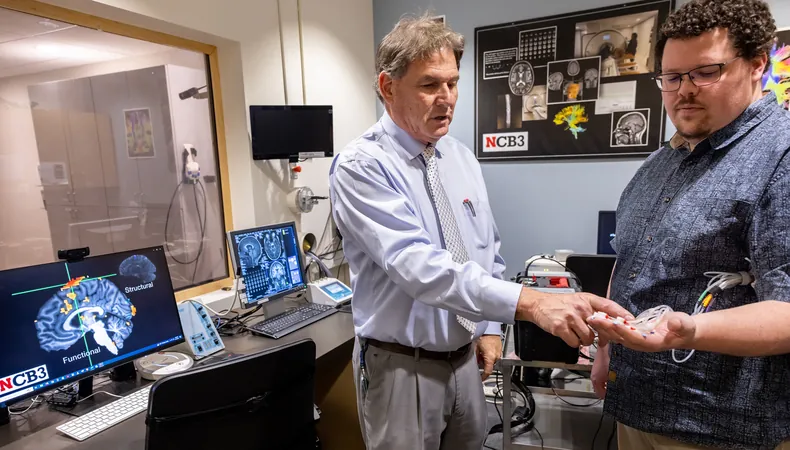
Revolutionary Discovery! Scientists Unveil Promising New Antibiotic Compound from Soil
2025-03-31
Author: John Tan
In a groundbreaking development that could transform the fight against antibiotic resistance, a collaborative team of researchers from Canada and the United States has identified a new antibiotic peptide, potentially paving the way for an entirely novel class of antibiotics.
The excitement stems from a unique peptide discovered in soil bacteria cultivated for a year at McMaster University in Ontario. The discovery arose when scientists noted that a substance produced by one of the isolated bacteria exhibited antibacterial properties against strains of bacteria notorious for their multidrug resistance, leading to the identification of a peptide called lariocidin. This peptide, reminiscent of a lasso due to its knotted chemical structure, has not only shown efficacy against a broad range of bacterial species but also demonstrated non-toxicity to human cells in initial tests.
Published recently in Nature, the findings have sparked new hope in the battle against antibiotic-resistant infections, as current antibiotics struggle to combat these resilient strains. Dr. Gerry Wright, who leads the Michael G. DeGroote Institute for Infectious Disease Research at McMaster, expressed his optimism saying, “This is exactly where you want to be at the beginning of this journey. Now to see whether we can turn it into a drug.”
A Serendipitous Discovery
Over several years, Wright’s research team has meticulously gathered around 13,000 microbes from the environment, aiming to uncover naturally occurring antibiotic resistance and antimicrobial compounds. Historically, the environment has been a treasure trove for antibiotics—from the discovery of penicillin in mold in 1928 to the identification of daptomycin in soil samples in the late 1980s. However, it has been increasingly challenging to discover new compounds, with pharmaceutical companies shifting focus away from environmental sources. Wright noted this trend: "They kept finding penicillin or streptomycin over and over again. It's easy to find those molecules. It's hard to find something new."
The breakthrough came when Wright and his team constructed a culture of microbes from soil taken from a team member's backyard. Despite many fast-growing bacteria dying off, they identified an extract from the often-overlooked bacterium Paenibacillus that presented strong antibacterial activity against pathogenic strains, including Escherichia coli and a drug-resistant form of Acinetobacter baumannii.
Interestingly, while initial tests suggested the activity might be due to colistin—an older antibiotic produced by Paenibacillus—the researchers used advanced techniques to isolate lariocidin as a novel compound, with its unique properties potentially offering a fresh approach to combat existing antibiotic resistance.
A Unique Mechanism of Action
In an exciting twist, further investigations into lariocidin revealed its ability to inhibit bacterial growth by binding to bacterial ribosomes, the cellular machinery responsible for protein synthesis. However, unlike traditional antibiotics that target well-known binding sites on ribosomes, lariocidin adheres to a different region, circumventing the resistance mechanisms that often neutralize existing drugs.
According to Dr. Yury Polikanov from UIC, this new approach is essential in antibiotic development. "In the antibiotic discovery field, you want a weapon that kills by targeting something different than what has been used before," he stated.
Furthermore, lariocidin did not exhibit toxicity in human cell tests, raised hope by showing potent effects in animal models, and even yielded a double-knotted variant, lariocidin B, which may possess improved drug-like characteristics.
The Long Journey to Clinical Application
Despite the promising findings, the path from laboratory discovery to clinical application is lengthy and fraught with challenges. Wright acknowledges that the transition from a natural product to a clinical drug will require extensive pharmacological studies, optimization of the peptide structure, and substantial funding—an area where the pharmaceutical industry has been hesitant to invest.
“The environment for antibiotic discovery is very challenging,” he remarked, noting that not many companies are eager to dive back into this complex field.
However, he remains hopeful about future collaborative efforts and innovative strategies that could surface new and effective antibacterial agents. The partnership between McMaster University and the University of Illinois, supported by the Canadian and US governments, exemplifies a collaborative spirit that Wright believes could lead to significant advancements.
“This is a good-news story. If we work together, we can do great things,” he concluded, reinforcing the importance of teamwork in the ongoing battle against antibiotic resistance.
As the world grapples with rising cases of antibiotic-resistant infections, discoveries like lariocidin serve as a beacon of hope, reminding us that solutions may lie in the most unexpected places—like a simple patch of soil.







 Brasil (PT)
Brasil (PT)
 Canada (EN)
Canada (EN)
 Chile (ES)
Chile (ES)
 Česko (CS)
Česko (CS)
 대한민국 (KO)
대한민국 (KO)
 España (ES)
España (ES)
 France (FR)
France (FR)
 Hong Kong (EN)
Hong Kong (EN)
 Italia (IT)
Italia (IT)
 日本 (JA)
日本 (JA)
 Magyarország (HU)
Magyarország (HU)
 Norge (NO)
Norge (NO)
 Polska (PL)
Polska (PL)
 Schweiz (DE)
Schweiz (DE)
 Singapore (EN)
Singapore (EN)
 Sverige (SV)
Sverige (SV)
 Suomi (FI)
Suomi (FI)
 Türkiye (TR)
Türkiye (TR)
 الإمارات العربية المتحدة (AR)
الإمارات العربية المتحدة (AR)